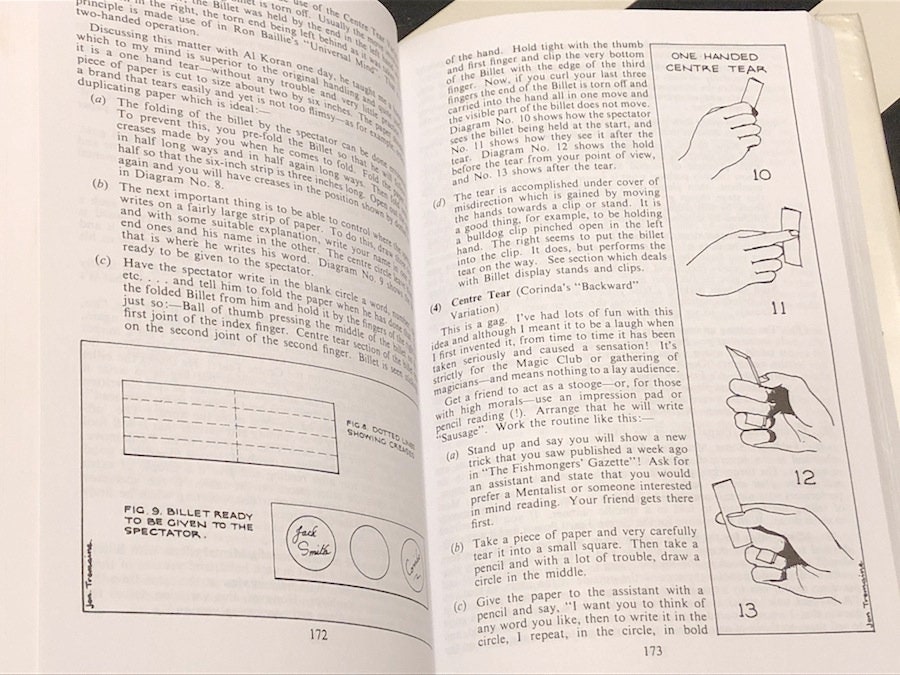

Still, I found it enjoyable and informative to read, not just as a source of ideas for tricks I could try myself, but also for a taste of history: this is how magic used to be performed, and in some ways, it hasn't changed all that much. Some of the tricks in Thirteen Steps might have been more impressive in the mid-20th century, when this was not an option. Perhaps of greater concern is that modern technology provides a new way for many of the effects in the book to be achieved, and an audience might suspect some technological means are being used. Additionally, the age of the material (from the 1950s) means that much of it will need to be slightly adapted to fit modern sensibilities, but this is relatively straightforward to do for most of the tricks Corinda presents.

Some of the effects are best suited to a stage with a substantial audience, and some parts of the book (such as the chapter on "Publicity Stunts") are explicitly geared toward providing career advice for mentalists. "Thirteen Steps to Mentalism" is considered a classic of the field, and it includes a wealth of tricks and other information that is useful for a practicing mentalist.Ī few caveats: Corinda's book is geared toward people who want to practice mentalism professionally.
#Techniques in 13 steps to mentalism series
It is a compilation of 13 lessons, originally released as a series of booklets. "Thirteen Steps to Mentalism" (1961) is Tony Corinda's book on mentalism, the branch of magic that deals with effects that resemble mind reading, telepathy, predicting the future, and the like.


 0 kommentar(er)
0 kommentar(er)
